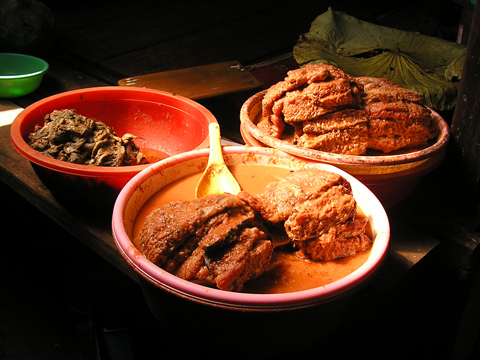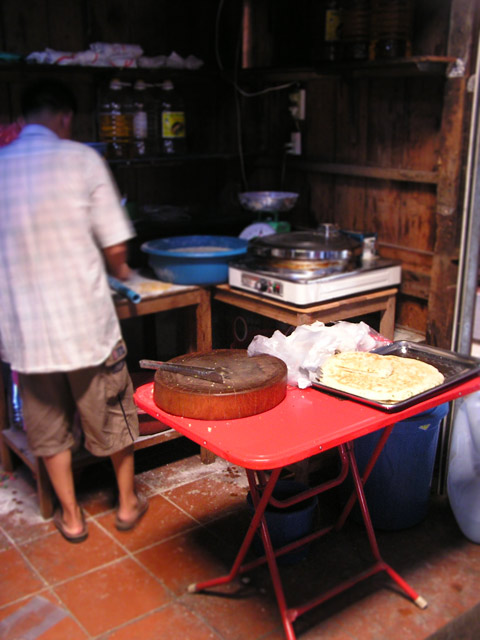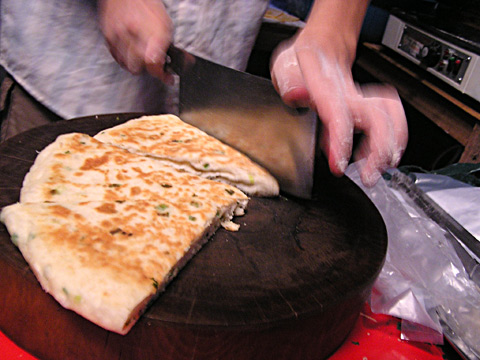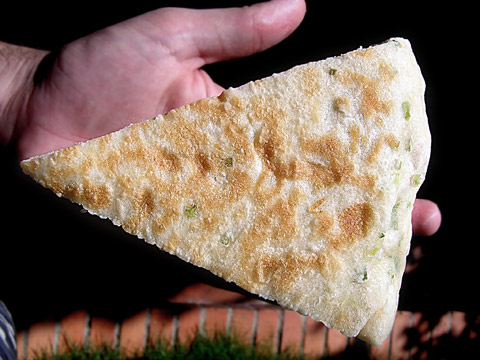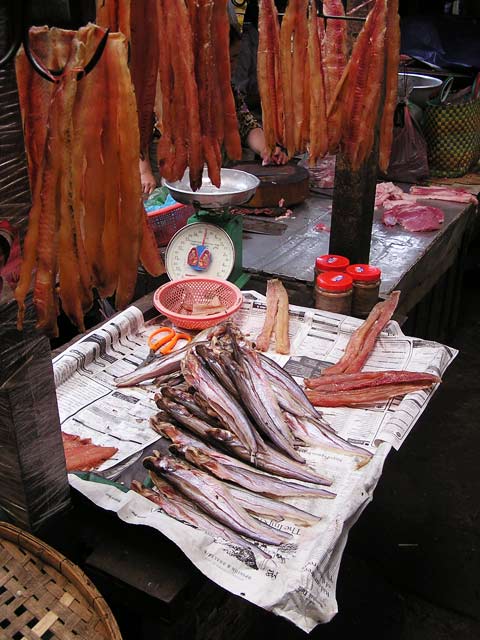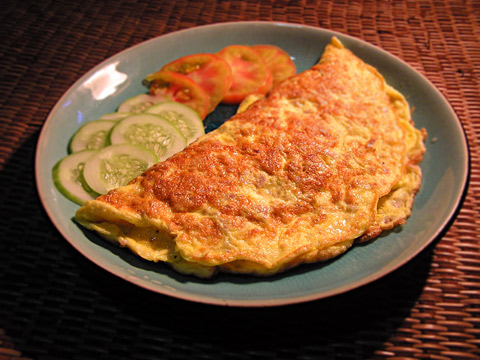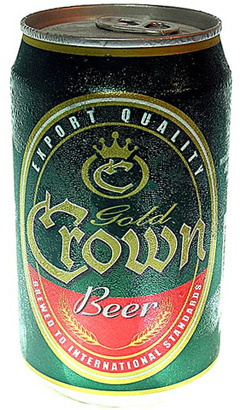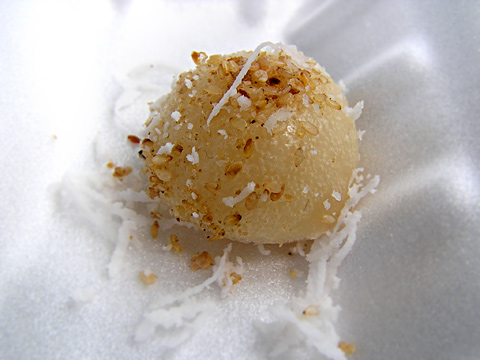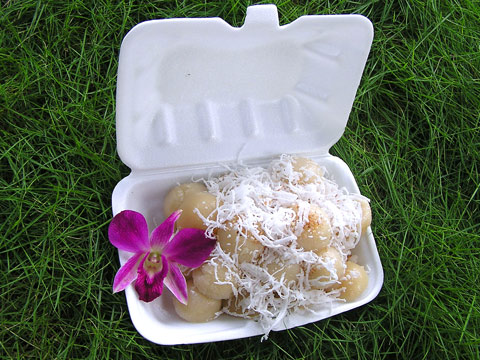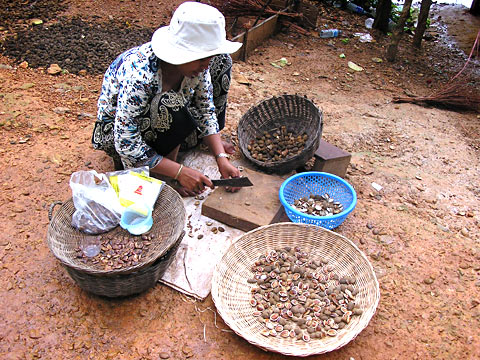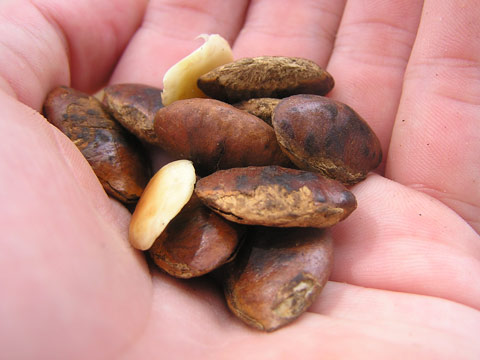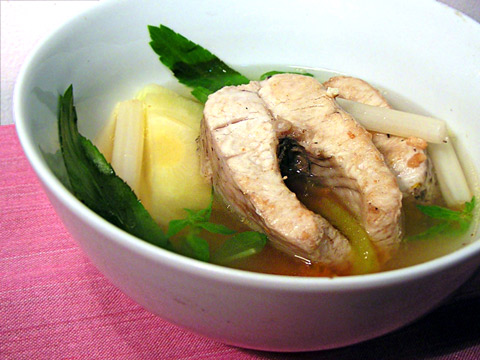
It’s amazing what a few hundred years of invasion and counter-invasion will do to a relationship with your immediate regional neighbours. At best, Cambodia’s relationship with Vietnam is rocky. Indeed, there is a huge amount of debate as to whether the Khmer language word for the Vietnamese : yuon : actually constitutes a racial slur. How it came to be appended to this simple sour soup, I literally have no idea.
Generally, this soup is a lunchtime meal component to provide a refreshing, sour complement to a few other dishes. Flavour-wise, the main event is the balance between fish, sour tamarind, sweet/sour pineapple, and the floral rice paddy herb and sawtooth leaf freshness. Occasionally, the soup contains chilli, but this one doesn’t.
What you’ll need:
400 grams of firm-fleshed white fish, in steaks.
100 grams of fresh pineapple
100 grams of lotus stem (prolit). If they’re not already clean, rub a wooden chopstick along them to remove the crazy stringy skin from the outside.
Half a clove of garlic
A ripe tomato
One tablespoon of fish sauce (tik trei)
One tablespoon of oil
1/2 cup of tamarind water : to make tamarind water, soak about 100gms of tamarind pulp in 1/2 a cup of warm water for 5 minutes, then rub the pulp off the seeds with your fingers. Strain to get rid of the seeds and stringier bits of pulp. You can make it in bulk and keep it in the refrigerator for a few days, but it will begin to ferment.
Four cups of water
Two teaspoons of sugar
Two teaspoons of salt
1/4 cup of saw mint (chee parang)
1/4 cup of rice paddy herb (ma-om)
Method:
Clean your fish and chop into steaks. Finely chop the garlic and pan fry in oil. Add the fish to the pan.
While the fish fries, cut the lotus stem into 5cm lengths, skin then chop the pineapple into bite-size chunks, cut the tomato into wedges. In another pot, bring water, half of the tamarind water, sugar and salt to a gentle boil.
When the fish is a pleasing golden brown, add the fish sauce to the pan of fish and garlic to deglaze. Transfer the fish, and about half the garlic/oil/sauce to the boiling water. Immediately add the lotus stems and return to a simmer.
Wait exactly five minutes. No more.
Add the pineapple and tomato. Cook until the skin just starts to peel from the tomato. Taste and add more salt/sugar/tamarind water if necessary.
Divide the saw mint and rice paddy herb evenly amongst 4 bowls (or stir into the soup if you’re serving immediately/lazy) and transfer the soup to a tureen that you only use on “special” occasions.
Makes 4 smallish bowls.
Also known as: samlor machu yuon, samla mahjew/maju yuon, rarely, samla machu trei to avoid the y-word.
Continue reading Samla Machou Yuon: The Y-word
